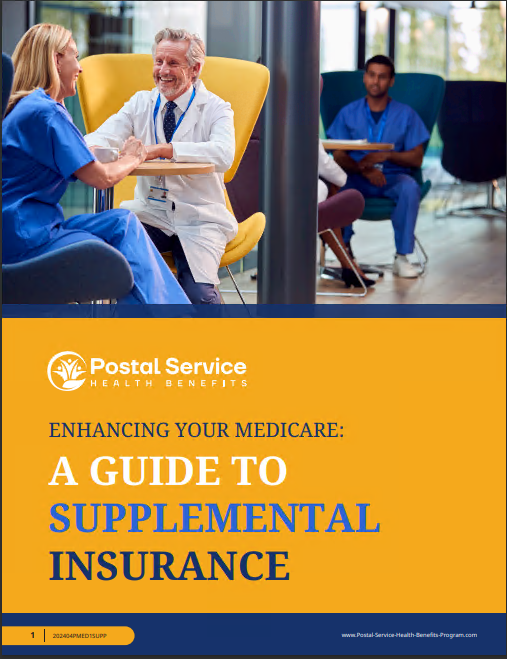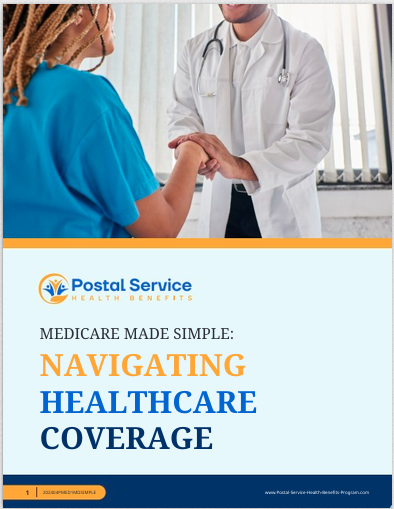Key Takeaways
- The Postal Service Health Benefits (PSHB) Program is set to replace the Federal Employees Health Benefits (FEHB) Program for USPS retirees in 2025.
- USPS retirees should understand the associated costs and benefits of PSHB to make informed decisions about their healthcare options.
USPS Retirees, Here’s What You Need to Know About the Costs and Benefits of PSHB
As of January 1, 2025, a significant change is on the horizon for retired United States Postal Service (USPS) employees. The Postal Service Health Benefits (PSHB) Program will replace the Federal Employees Health Benefits (FEHB) Program, marking a substantial shift in how USPS retirees access their health benefits. Understanding the details of PSHB—its costs, benefits, and key differences from the FEHB—is crucial for retirees to navigate this transition smoothly and ensure they maintain the coverage that best meets their healthcare needs.
What is the Postal Service Health Benefits (PSHB) Program?
The Postal Service Health Benefits (PSHB) Program was established as part of the Postal Service Reform Act of 2022, with the goal of providing USPS employees and retirees with health coverage tailored specifically to their needs. This program is designed to take effect on January 1, 2025, transitioning all current USPS employees and retirees from the Federal Employees Health Benefits (FEHB) Program to the newly formed PSHB.
The PSHB is intended to streamline healthcare coverage and reduce costs for USPS by creating a separate risk pool for USPS employees and retirees, distinct from other federal employees. This separation allows for more targeted management of healthcare costs and benefits, with the potential for plans that better reflect the unique needs of USPS personnel.
Costs Associated with PSHB
One of the primary concerns for USPS retirees is the cost of transitioning to the PSHB Program. Although the exact premiums for PSHB plans have yet to be announced, it is essential to understand that these costs might differ from those under the FEHB Program.
Premiums and Cost Sharing
Like the FEHB Program, the PSHB will require retirees to pay premiums for their chosen plans. These premiums will vary depending on the plan selected, the level of coverage, and the number of dependents covered. Additionally, the PSHB may have different cost-sharing requirements, such as deductibles, copayments, and coinsurance. Understanding these potential changes is vital for retirees as they plan their healthcare budgets.
Integration with Medicare
For retirees who are eligible for Medicare, the PSHB plans will integrate with Medicare Parts A and B. This means that retirees enrolled in both PSHB and Medicare will likely see reduced out-of-pocket costs for medical services, as Medicare will become the primary payer, with PSHB acting as secondary coverage. However, those who opt not to enroll in Medicare Part B may face higher premiums under PSHB, reflecting the additional cost to the plan of being the primary payer for those retirees.
Medicare Part B Enrollment Requirement
A significant aspect of the PSHB transition is the requirement for Medicare-eligible USPS retirees to enroll in Medicare Part B to participate in the PSHB Program. This requirement aligns with the broader federal strategy to ensure that federal health plans coordinate effectively with Medicare, reducing the overall cost burden on the USPS health system.
Retirees who are not currently enrolled in Medicare Part B will need to do so during a special enrollment period, which will be offered in the lead-up to the PSHB’s implementation. Failure to enroll in Medicare Part B could result in higher costs or limited plan options under the PSHB.
Benefits of the PSHB Program
The PSHB Program is designed to offer comprehensive health benefits similar to those provided under the FEHB Program. However, the structure and options within PSHB are expected to be tailored more closely to the needs of USPS employees and retirees.
Continuity of Care
One of the key advantages of the PSHB Program is the emphasis on continuity of care. Many retirees may be concerned about changing their healthcare providers or losing access to their current doctors under the new program. The good news is that the PSHB Program is expected to include a broad network of healthcare providers, ensuring that retirees can continue to see their preferred doctors without interruption.
Range of Plan Options
The PSHB Program will offer a variety of plan options, much like the FEHB Program, including Health Maintenance Organizations (HMOs), Preferred Provider Organizations (PPOs), and Consumer-Driven Health Plans (CDHPs). These options will allow retirees to select the plan that best fits their healthcare needs and financial situation. Additionally, these plans are expected to include comprehensive coverage for preventive care, prescription drugs, and other essential health services.
Potential for Lower Costs
The separation of USPS employees and retirees into their own risk pool under the PSHB Program could lead to lower overall costs for health coverage. By tailoring the program to the specific health needs and risks associated with USPS personnel, the PSHB may be able to offer more competitive premiums and out-of-pocket costs compared to the FEHB Program.
Enhanced Support and Resources
The PSHB Program is also expected to provide enhanced support and resources for retirees. This includes access to dedicated customer service representatives who specialize in helping USPS retirees navigate their health benefits. Additionally, educational resources will be made available to ensure that retirees fully understand their coverage options and can make informed decisions about their healthcare.
Key Dates and Enrollment Process
As the PSHB Program is set to begin on January 1, 2025, USPS retirees need to be aware of the key dates and the enrollment process to ensure they do not miss any critical deadlines.
Enrollment Periods
The Office of Personnel Management (OPM) will announce specific enrollment periods for the PSHB Program in the months leading up to its implementation. During these periods, retirees will have the opportunity to review the available plans, compare benefits and costs, and select the coverage that best suits their needs.
Special Enrollment Period for Medicare Part B
For those retirees who are not yet enrolled in Medicare Part B, a special enrollment period will be offered to allow them to sign up without facing late enrollment penalties. This period is a crucial opportunity for retirees to align their Medicare coverage with their new PSHB plan, ensuring they receive the full range of benefits available to them.
Automatic Enrollment for Current FEHB Enrollees
Current FEHB enrollees who do not actively select a new plan under the PSHB during the enrollment period may be automatically enrolled in a plan that is similar to their current FEHB coverage. While this automatic enrollment is intended to provide continuity of coverage, it is still important for retirees to review their options and make an active selection to ensure they are in the plan that best meets their needs.
Preparing for the Transition to PSHB
The transition to the PSHB Program represents a significant change for USPS retirees, and it is essential to start preparing now. By understanding the costs, benefits, and key dates associated with the PSHB, retirees can make informed decisions that will help them maintain their health coverage without interruption.
Review Current Coverage
Retirees should begin by reviewing their current FEHB coverage to understand how it compares to the new PSHB options. This includes assessing the costs, coverage levels, and provider networks of their current plan and determining what changes may be necessary under the PSHB Program.
Attend Informational Sessions
As the PSHB implementation date approaches, USPS and OPM will likely offer informational sessions and resources to help retirees understand the new program. Attending these sessions and reviewing available materials will be critical for staying informed about the transition process.
Consult with a Licensed Insurance Agent
Given the complexities of healthcare coverage, retirees may benefit from consulting with a licensed insurance agent who specializes in federal employee benefits. These professionals can provide personalized advice and help retirees navigate the enrollment process, ensuring they make the best choices for their healthcare needs.
Stay Informed
Finally, retirees should stay informed by regularly checking official USPS and OPM communications for updates on the PSHB Program. As new details emerge, it is important to stay up to date on any changes that may affect their coverage and costs.
Navigating the Transition with Confidence
As the USPS prepares to transition its retirees to the PSHB Program in 2025, understanding the costs, benefits, and enrollment processes is more important than ever. By staying informed and taking proactive steps to prepare, USPS retirees can navigate this transition with confidence, ensuring they continue to receive the healthcare coverage they need.
Contact Information:
Email: [email protected]
Phone: 7605558901







